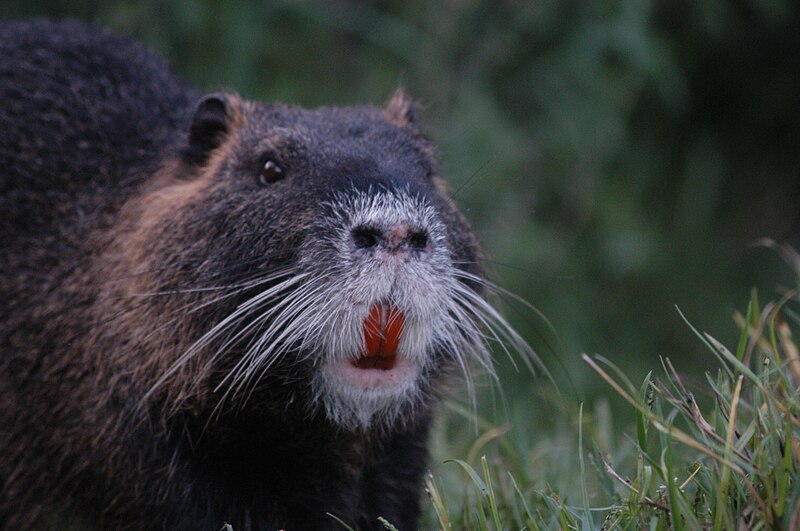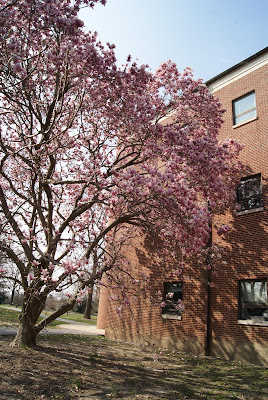 |
| Brown Marmorated Stink Bug (Halyomorpha halys) |
I've never taken an Entomology course and all I have for an insect reference is a butterfly field guide which is not particularly relevant, so based on my Wikipedia research, I understand that the Stinkbugs comprise family Pentatomidae, all sharing a common "shield-shaped" body structure and tendency to emit a foul odor when disturbed. The Brown Marmorated Stink Bug is an Asian species that hitchhiked into our country sometime in the mid-nineties, and seems to particularly enjoy the Mid-Atlantic regions where it is predominately observed.
Growing up in New England I was vaguely aware of what a stinkbug was... I thought of them as being green in color (probably thinking of a different species) and was under the impression killing them would result in the release of a foul odor. I'm not sure if I ever actually saw one though. I would however, become intimately acquainted with them as soon as I entered Delaware. When I first visited the state last year, there were a few of them wandering around the house I was staying in, so I essentially was in Delaware for a mere four hours before encountering the ubiquitous pest. I actually found one in my truck during my drive back to Boston. Thankfully it was dead, so I won't be credited with introducing the species to New England.
When I first moved here, I remember seeing a few of them, as well as a few spiders, crawling along my bedroom walls. I figured the spiders were keeping them in check so I didn't do much about it. A few stinkbugs were no big deal. As long as they kept their numbers small, their noise levels down, and stayed off of me and out of my bed, I could handle it.
This all worked out fine until one fall day. I was studying for my first Biochemistry exam, and while in a state of panic trying to wrap my mind around kinetics and first order rate constants, noticed that the Stinkbug population in my bedroom had increased by a factor of ten. They were swarming all over both of my windows, making their way in through the cracks and rapidly establishing themselves on my walls, bed, and orchids.
Apparently this swarming effect is a result of an aggregation chemical they release. There was about to be a stinkbug party in my room, and they were apparently texting all their friends.
This still wasn't enough to make me stop studying, as I was pretty stressed out for the test, though I had noted that I would probably need to do something about this shortly. The threshold was not crossed until a bunch of them got a bit belligerent and decided where they really wanted to be was in the lamp at the other side of the room. Now if you haven't heard these things when they fly, they make a racket: particularly when they are all flying around in the same place. That was the breaking point. I threw my book down, and carried and probably close to forty of them into the bathroom where they were deposited into and flushed down the toilet. I got a B+ on the test, and had no more significant problems with Stinkbugs for the next six months.
Now with the spring temperatures, they've become a bit more active again. I should have probably taken the fact that one of them made some kind of bizarre kamikaze attack at me last month (charging into my face from the other side of the room) as a sign that the war was back on. I thought the truce was still good. But they crossed the line again this week. After getting back from North Carolina, I was just falling asleep and rolled over a bit, thinking I felt something on my cheek but thinking nothing of it. I soon heard this weird buzz, characteristic of a stinkbug trying to fly, and then was next greeted by a the foul cilantro-like odor. Stinkbug blasted me in the face at point-blank range. The essence was still with me for a good few hours the next morning. This was obviously not appreciated by me, and I have now issued a personal "exterminate on sight" order.
Apparently the stinkbug is considered more of an agricultural pest than a residential pest in the state, though I certainly find them an annoyance, and hope to make the species realize that the foul odor they release when being disturbed is nothing near as severe as what happens when they disturb me.
Though I guess it could have been worse. Could have been Delaware's new invasive pest. the Nutria.
Actually I really wish I hadn't thought of that. Now I'm haunted by the idea of rolling over during the night to find my face up against a wet 2' long rat. Luckily they're still only in Southern Delaware... i think...


.JPG/800px-Grafting_of_Plum_(cultivar_Regina_Claudia_yellow).JPG)






























